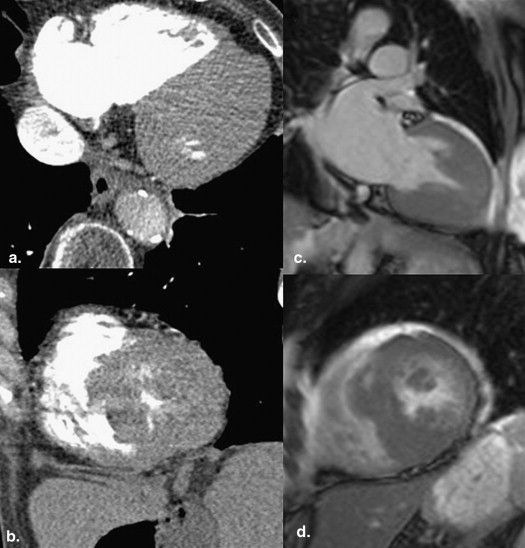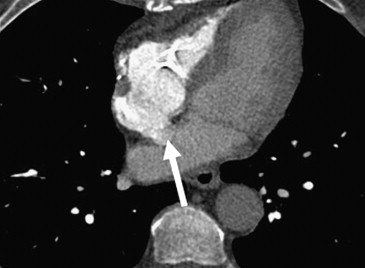Rationale and Objectives
The purposes of this study were to assess the accuracy of trainee radiologists’ reports for computed tomographic pulmonary angiographic (CTPA) imaging and to determine agreement or discrepancy with final verified consultant reports.
Materials and Methods
A total of 100 consecutive out-of-hours CTPA examinations were prospectively analyzed. Fifty-one male and 49 female subjects were included in the study. The mean age of patients scanned was 63.7 years (range, 17–98 years).
Results
Eighteen of the 100 subjects (18%) had findings positive for pulmonary embolism. The interobserver agreement for pulmonary embolism between on-call radiology residents and consultant radiologists was almost perfect (κ = 0.932; 95% confidence interval, 0.84–1.0; P < .0001). There was one false-negative CTPA report. Eighty-two CTPA scans (82%) were reported as negative for pulmonary embolism by consultant radiologists. In this group, there was a single false-positive interpretation by the on-call specialist resident. The interobserver agreement for all findings between resident and consultant reports was almost perfect (weighted κ = 0.87; 95% confidence interval, 0.79–0.96; P < .0001). The overall discrepancy rate, including both false-positive and false-negative findings, between the on-call radiology resident and consultant radiologist was 8% (eight of 100).
Conclusions
CTPA reports by radiology residents can be relied and acted upon without any major discrepancies. There is a relatively much higher proportion of patients with alternative diagnoses, mainly infective consolidation and heart failure presenting with similar symptoms and signs as pulmonary emboli. It is imperative for trainees to be systematic and review all images if observational omissions are to be reduced.
Multidetector computed tomographic (CT) pulmonary angiographic (CTPA) imaging is now the most common imaging modality in the evaluation of suspected pulmonary embolism (PE). A large number of CTPA studies are performed out of hours, and in teaching hospitals, the initial provisional reports are issued by trainee radiologists and are not checked until the following morning by consultant radiologists. These trainee radiologists are referred to as specialist residents, and they undergo structured specialist training in their chosen fields of medicine. This is at least over a 5-year period in radiology, at the end of which residents are considered trained, ready to be consultants . Specialist residents do on-site training out of normal working hours on a rotational basis, which is referred to as on-call rotation. These provisional reports are crucial, as they provide the basis for out-of-hours clinical decisions. The purposes of this study were to assess the accuracy of trainee radiologists’ reports for CTPA scans and to determine agreement or discrepancy with the final verified consultant reports. To the best of our knowledge, this is the first study of its kind performed in a UK teaching hospital.
Materials and methods
We prospectively analyzed 100 consecutive out-of-hours CTPA examinations. These were performed during a 28-day period from August to September 2008. Sixty-four scans were performed on a 16-slice multidetector CT system (Somatom Sensation; Siemens AG, Munich, Germany) (tube voltage, 120 kV; effective tube current–time product, 140 mAs; rotation time, 0.5; collimation, 0.75; reconstruction slice thickness, 1 mm; reconstruction interval, 0.5 mm). Thirty-six scans were performed on a 64-slice multidetector CT system (Aquilion; Toshiba Corporation, Tokyo, Japan) (tube voltage, 120 kV; effective tube current–time product, 182 mAs; rotation time, 0.5; pitch, 0.828; reconstruction slice thickness, 1 mm; reconstruction interval, 0.5 mm).
Get Radiology Tree app to read full this article<
Get Radiology Tree app to read full this article<
Get Radiology Tree app to read full this article<
Get Radiology Tree app to read full this article<
Get Radiology Tree app to read full this article<
Get Radiology Tree app to read full this article<
Results
Get Radiology Tree app to read full this article<
Get Radiology Tree app to read full this article<
Table 1
Correlation between Consultant and Specialist Resident Reports
Radiology Resident Report Consultant Report Total Positive Negative Positive 17 1 18 Negative 1 81 82 Total 18 82 100
Overall proportion of agreement = 0.98; proportion of positive agreement = 0.94; proportion of negative agreement = 0.99.
Table 2
Summary of Additional Chest Findings in Patients with Pulmonary Embolism ( n = 18)
Finding_n_ None 12 Lung findings Infarcts 1 Consolidation 2 Cardiac Right heart strain 1 Right heart strain and bronchiectasis 1 Right heart strain, atelectasis, and pleural effusion 1
Get Radiology Tree app to read full this article<
Get Radiology Tree app to read full this article<
Get Radiology Tree app to read full this article<
Table 3
Summary of Findings in Patients with No PE ( n = 82)
Finding_n_ No PE and no lung findings 37 Lung findings Pneumonia 5 Pneumonia and pneumothorax 1 Pneumonia and atelectasis 2 Atelectasis 1 Atelectasis and effusion 4 Pneumothorax 1 (missed by SpR) Emphysema 6 (2 missed by SpR) Bronchiectasis 4 (1 missed by SpR) Lung mass 1 Pleural effusion 3 Pleural effusion, emphysema and fibrosis 1 Lung metastases 1 Bone (spine and rib) metastases 1 Cardiac Heart failure 7 (2 missed by SpR) Pericardial effusion 2 HOCM 1 (missed by SpR) Interatrial septal aneurysm 1 Lung and cardiac findings Pneumonia and failure 2 Interstitial lung disease and failure 1 (missed by SpR)
HOCM, hypertrophic obstructive cardiomyopathy; PE, pulmonary embolism; SpR, specialist resident.
Get Radiology Tree app to read full this article<
Get Radiology Tree app to read full this article<
Table 4
Overall Agreement and Discrepancy
Radiology Resident Report Consultant Report Total PE Present Other Significant Findings but No PE Normal PE present 17 0 1 18 Other significant findings but no PE 0 39 0 39 Normal 1 6 36 43 Total 18 45 37 100
PE, pulmonary embolism.
Get Radiology Tree app to read full this article<
Get Radiology Tree app to read full this article<
Discussion
Get Radiology Tree app to read full this article<
Get Radiology Tree app to read full this article<
Get Radiology Tree app to read full this article<
Get Radiology Tree app to read full this article<
Get Radiology Tree app to read full this article<
Get Radiology Tree app to read full this article<
Get Radiology Tree app to read full this article<
Get Radiology Tree app to read full this article<
Get Radiology Tree app to read full this article<
Get Radiology Tree app to read full this article<
References
1. Available at: http://www.rcr.ac.uk/content.aspx?PageID¼164 .
2. Kundell H.L., Polansky M.: Measurement of observer agreement. Radiology 2003; 228: pp. 303-308.
3. Landis J.R., Koch G.G.: The measurement of observer agreement for categorical data. Biometrics 1977; 33: pp. 159-174.
4. Barritt D.W., Jordan S.C.: Anticoagulant drugs in the treatment of pulmonary embolism. A controlled trial. Lancet 1960; 18: pp. 1309-1312.
5. Murray U.M., Eldevik O.P., Desmond J.S.: Clinical consequences of misinterpretations of neuroradiologic CT scans by on-call radiology residents. AJNR Am J Neuroradiol 2000; 21: pp. 43-44.
6. Wysoki M.G., Nassar C.J., Koenigsberg R.A., et. al.: Head trauma: CT scan interpretation by radiology residents versus staff radiologists. Radiology 1998; 208: pp. 125-128.
7. Albano M.C., Ross G.W., Ditchek J.J., et. al.: Resident interpretation of emergency CT scans in the evaluation of acute appendicitis. Acad Radiol 2001; 8: pp. 915-918.
8. Wechsler R.J., Spettell C.M., Kurtz A.B., et. al.: Effects of training and experience in interpretation of emergency body CT scans. Radiology 1996; 199: pp. 717-720.
9. Ruchman R.B., Jaeger J., Wiggins E.F., et. al.: Preliminary radiology resident interpretations versus final attending radiologist interpretations and the impact on patient care in a community hospital. AJR Am J Roentgenol 2007; 189: pp. 523-526.
10. Tieng N., Grinberg D., Li S.F.: Discrepancies in interpretation of ED body computed tomographic scans by radiology residents. Am J Emerg Med 2007; 25: pp. 45-48.
11. Shaham D., Heffez R., Bogot N.R., et. al.: CT pulmonary angiography for the detection of pulmonary embolism: interobserver agreement between on-call radiology residents and specialists (CTPA interobserver agreement). Clin Imaging 2006; 30: pp. 266-270.
12. Safriel Y., Sclafani S., Gale B., et. al.: Comparing the interpretations of CT pulmonary angiograms by attending and resident radiologists: can residents identify life-threatening pulmonary emboli in hospitalized patients?. Emerg Radiol 2002; 9: pp. 55-59.
13. Ghanima W., Nielssen B.E., Holmen L.O., et. al.: Multidetector computed tomography (MDCT) in the diagnosis of pulmonary embolism: interobserver agreement among radiologists with varied levels of experience. Acta Radiol 2007; 48: pp. 165-170.
14. Uysal Ramadan S., Kosar P., Sonmez I., et. al.: Optimisation of contrast medium volume and injection-related factors in CT pulmonary angiography: 64-slice CT study. Eur Radiol 2010; 20: pp. 2100-2107.
15. Patel S., Kazerooni E.A., Cascade P.N.: Pulmonary embolism: optimization of small pulmonary artery visualization at multi-detector row CT. Radiology 2003; 227: pp. 455-460.
16. Schoepf U.J., Holzknecht N., Helmberger T.K., et. al.: Subsegmental pulmonary emboli: improved detection with thin-collimation multi-detector row spiral CT. Radiology 2002; 222: pp. 483-490.
17. Carrier M., Righini M., Wells P.S., et. al.: Subsegmental pulmonary embolism diagnosed by computed tomography: incidence and clinical implications. A systematic review and meta-analysis of the management outcome studies. J Thromb Haemost 2010; 8: pp. 1716-1722.
18. Richman P.B., Courtney D.M., Friese J., et. al.: Prevalence and significance of nonthromboembolic findings on chest computed tomography angiography performed to rule out pulmonary embolism: a multicenter study of 1,025 emergency department patients. Acad Emerg Med 2004; 11: pp. 642-647.
19. Tsai K.L., Gupta E., Haramati L.B.: Pulmonary atelectasis: a frequent alternative diagnosis in patients undergoing CT-PA for suspected pulmonary embolism. Emerg Radiol 2004; 10: pp. 282-286.
20. Hall W.B., Truitt S.G., Scheunemann L.P., et. al.: The prevalence of clinically relevant incidental findings on chest computed tomographic angiograms ordered to diagnose pulmonary embolism. Arch Intern Med 2009; 169: pp. 1961-1965.
21. Ashman C.J., Yu J.S., Wolfman D.: Satisfaction of search in osteoradiology. AJR Am J Roentgenol 2000; 175: pp. 541-544.

